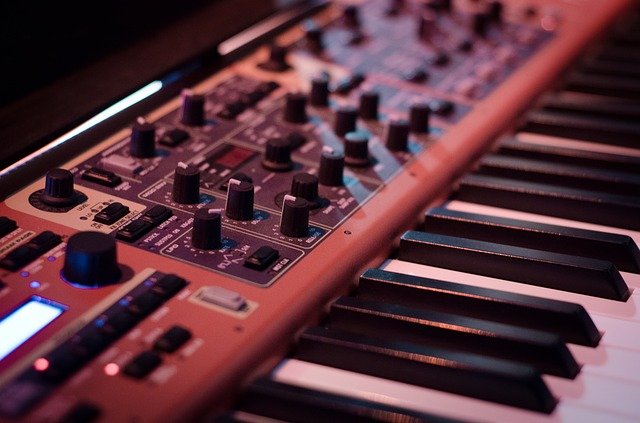
Part Two: Music
Engineering in Pop Culture
Read a summary using the INOMICS AI tool
At first glance, engineering and music may seem worlds apart. But when we look closer, the impact of engineering on the music industry cannot be underestimated. In the second part of a series on “Engineering in Pop Culture”, we look at how engineering has influenced music and what happens when their paths cross. Over the years, engineers have altered how music is created, performed, recorded, stored, transmitted, and heard. They have played a critical role in the evolution of music as an industry and as part of pop culture, and it is important to note that without engineers and engineering, music would not be what it is today.
Recording firsts
A major engineering innovation that changed, or some may say kick-started, the music industry was the invention of the phonograph in 1877 by American innovator Thomas Edison. For the first time, sound and music could be recorded and played back. He experimented with recording and reproducing sound on a disk of tin foil on a revolving platen. It was the precursor to the graphophone and the modern-day record player – all made for the purpose of recording sound with the functionality to play it back.
While the phonograph worked specifically on cylinder-based devices, the graphophone worked on flat disk-based devices and was invented by the Volta Graphophone Company (in 1886) set up by another great engineer and inventor of the time, Alexander Graham Bell. The graphophone replaced the tinfoil with wax cylinders as the recording medium, and engraved the recording rather than simply indenting it which made them more durable and usable.
Those early mechanical record players were normally powered by a wind-up spring motor and proved somewhat of a novelty at first and only became functional later on. The first pre-recorded musical wax cylinders were marketed in 1889 and were professional recordings of songs and instrumental sessions. Over the years the wax used in the cylinders were hardened so that they could be played with good quality over 100 times.
While the recording of sound and music evolved over the next 100 years through electrical recording, magnetic wire recording, tapes and digital, it was always those early engineers who pushed the innovation envelope. At each iteration, they made the functionality more user friendly, the recording quality even better and the playback sound clearer.
Instrumental innovations
Arguably, one of the most influential musical instruments that changed popular music forever was the synthesizer – and the first one was made by Robert Moog (an American engineering physicist) in 1964. He developed voltage-controlled oscillators which, as their name suggests, enabled the pitch to be controlled (for the first time) by a voltage. This and other ideas including envelopes (which controlled how notes swelled and faded), filters, noise generators and sequencers enabled Moog to build a musical instrument that became a standard throughout the 1970s and 80s. Pop Stars of that era adopted synthesizers to compose new types of electronic music and established it as a key component of popular culture.
 The evolution of playing, recording, and editing music on audio devices continued with the arrival of the MIDI in 1982. Till then, there was no common standard way of linking and synchronizing electronic instruments (like synthesizers) to each other and to computers (which were themselves becoming increasingly important to the production, recording and playing of music). Each manufacturer had their own proprietary standards making connections between different components incompatible and in a way slowed down the growth of the popular music industry. In response, a consortium of musical equipment manufacturers (including Sequential Circuits, Korg, Roland, and Yamaha) came together to work on a standard interface protocol which would enable seamless communications between different devices.
The evolution of playing, recording, and editing music on audio devices continued with the arrival of the MIDI in 1982. Till then, there was no common standard way of linking and synchronizing electronic instruments (like synthesizers) to each other and to computers (which were themselves becoming increasingly important to the production, recording and playing of music). Each manufacturer had their own proprietary standards making connections between different components incompatible and in a way slowed down the growth of the popular music industry. In response, a consortium of musical equipment manufacturers (including Sequential Circuits, Korg, Roland, and Yamaha) came together to work on a standard interface protocol which would enable seamless communications between different devices.
Subsequently, Dave Smith (an American engineer and musician) of Sequential Circuits and Ikutaro Kakehashi (a Japanese engineer and inventor) at Roland presented a paper on the Universal Synthesizer Interface at the American Audio Engineering Society conference in October 1981. At the 1983 Los Angeles National Association of Music Merchants show, they presented a Sequential Circuits Prophet-600 talking to a Roland keyboard over a small, 5-pin cable. That conference paper and exhibition demonstration paved the way to making, recording and synchronising music. Today, MIDI is used every day around the world and the musicians, DJs and producers who use it to create, perform, and share music can thank the engineers who led the way to the standard interface protocol.
When engineering and music collide
As we have seen, there are engineers who have helped shape the industry over the years. However, there are examples of engineers influencing the actual music itself. The confluence of engineering and music is perhaps no better personified than by American rockstar, inventor and engineer Tom Scholz. After graduating from the Massachusetts Institute of Technology (MIT) with bachelor’s and master’s degrees (both in mechanical engineering) in 1970, he worked as a senior product design engineer at Polaroid.
While there, he was involved in building a sound system for analogue instant films, and learned how recordings were made. He has said that by studying physics, he learnt how music worked. This collision of engineering and music inspired him to build his own recording studio at home, learn more about producing music and start recording demos. He continuously experimented with different guitars, amplifiers, microphones and equalizers. After several years and several rejections, those demos were eventually picked up by Epic Records who signed him and his group. The band was called Boston, the first song was called “More than a feeling” and the rest, as they say, is musical history.
However, despite the global success of the band he didn’t stop being true to his engineering roots. He founded Scholz Research & Development to follow through on his ideas of using engineering techniques to improve the creation of music. Over the years, the company produced several devices namely the Power Soak (an electronic device that reduces the power of a signal without distorting its waveform) and the Rockman (a headphone amplifier which allowed the guitarist to plug directly into the mixer on stage or in the studio). These products are still in use today by many musicians. He has 34 engineering patents to his name, ensuring that as well as his musical accomplishments, he will also forever be regarded as an accomplished engineer.
What the future holds
The impact of engineers and engineering on the pop music industry will only continue. Whether in the recording studio or in a musician’s bedroom, future pop, rock and R&B stars will take advantage of a convergence of digital technology, electrical engineering and new product development. Additionally, the arrival of digitization and streaming music via a range of devices will only spur on the interface of engineering and music. From smart instruments and smart studio production to artificial intelligence and the Internet of Musical Things (IoMusT), engineers will play a part in how musical stars create, record and disseminate their music.
Having said that, there is no guarantee that future pop stars will be human; there is the real possibility of Musical Robots playing their part too – but that’s for another blog.
-
- Conference
- Posted 2 weeks ago
42nd RSEP International Conference on Economics, Business and Finance
Between 19 Sep and 20 Sep in Madrid, Spain
-
- Conference
- (Hybrid)
- Posted 1 month ago
5th Interdisciplinary Conference on Electrics and Computer
Between 15 Sep and 16 Sep in Chicago, United States
-
- Workshop, Conference
- (Hybrid)
- Posted 6 days ago
International Conference on Applied Business and Economics - ICABE 2025 - 21th Edition - A HYBRID CONFERENCE
Between 3 Nov and 5 Nov in Kuwait City, Kuwait












